
“You can see me, but I don’t exist”
During Refugee Week this year with the reception for people seeking refuge in the UK and around the world becoming increasingly hostile, we look back on our “You can see me, but I don’t exist” project exhibited at this time two years ago.
For Refugee Week 2023, the Gignouxphotos team developed an exhibition pairing Alan’s camera obscura portraits of people seeking refuge with poetry written by them. The work was eventually exhibited in 12 libraries across the UK simultaneously.
When we were putting together our Arts Council submission for “You can see me, but I don’t exist,” the execution of the core exhibition concept was clear from the outset. Working with local refugee organisations in three UK cities, Alan would photograph people seeking refuge using a pinhole camera, leaving their faces and bodies blurry in the final images to reflect the erosion of self that so many said they feel because of living in an indefinite state of limbo. We would commission specialist workshop leaders to run creative writing workshops in which the people seeking refuge would be invited to respond to the portraits in poetry.
Beyond this, we wanted the exhibition to reach as wide an audience as possible, which we hoped would help us to ignite an ongoing conversation about the experience of people seeking refuge in the UK that would build understanding. Our challenge was to find a way of exhibiting the work in several places across the country without having to cover the expense of a tour.
Exhibition-in-a-book design
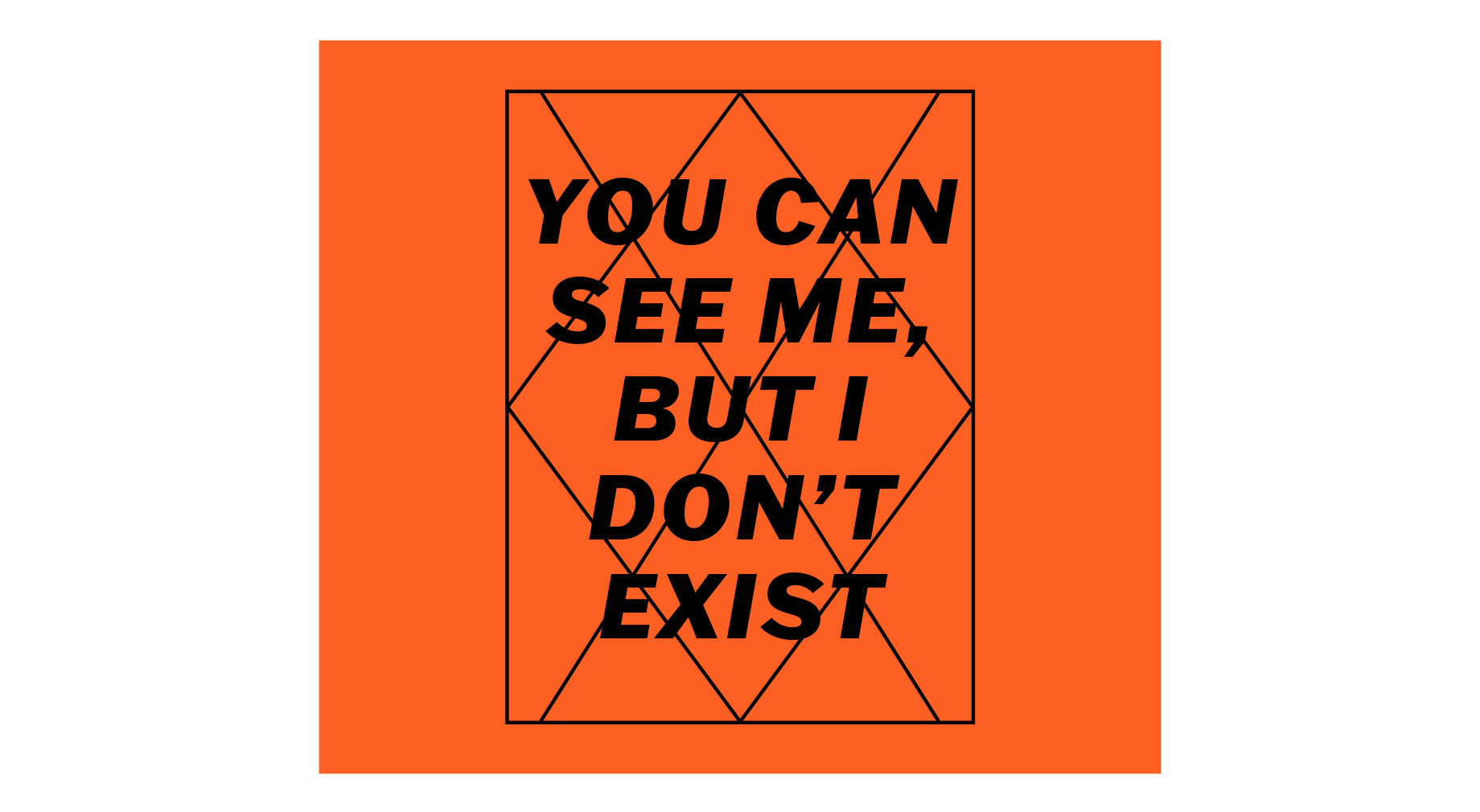
The inspiration for our exhibition-in-a-book came during one of our brainstorming meetings. Chloe remembered a conversation with photographer Emeric Lhuisset about his moving publication Maydan – Hundred Portraits (Andre Frere Editions.) The publication, printed on newsprint paper, brings us portraits of the faces of the revolution in 2014. The photographer explained that he had taken the publication apart to exhibit his work.
We decided that we would design a book that could be dismantled to exhibit the pages but also reassembled so that the exhibition would have a prolonged life once restored to the form of a book, which could then be added to the library collections. The book would need to house an exhibition that would be adaptable to the wide range of spaces that the libraries would have at their disposal.
Working with Emily Macaulay from Stanley James Press, we created an exhibition in a binder that could be posted to any library that expressed an interest in showing the exhibition. Thanks to Arts Council support, we could offer the exhibition to libraries for free. The images and poems are secured in the binder using black screw posts so they can be removed and subsequently returned at the end of the exhibition.
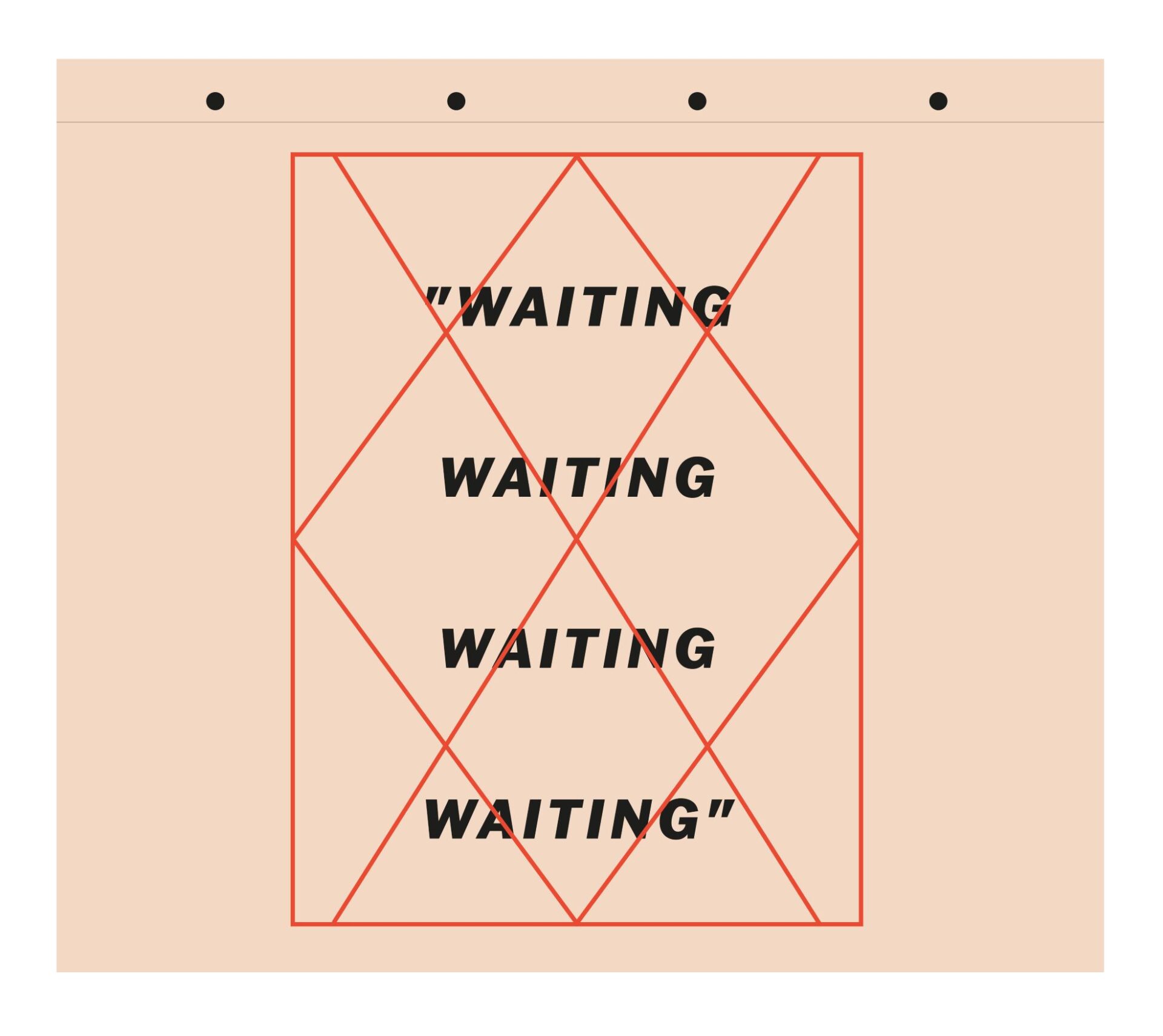
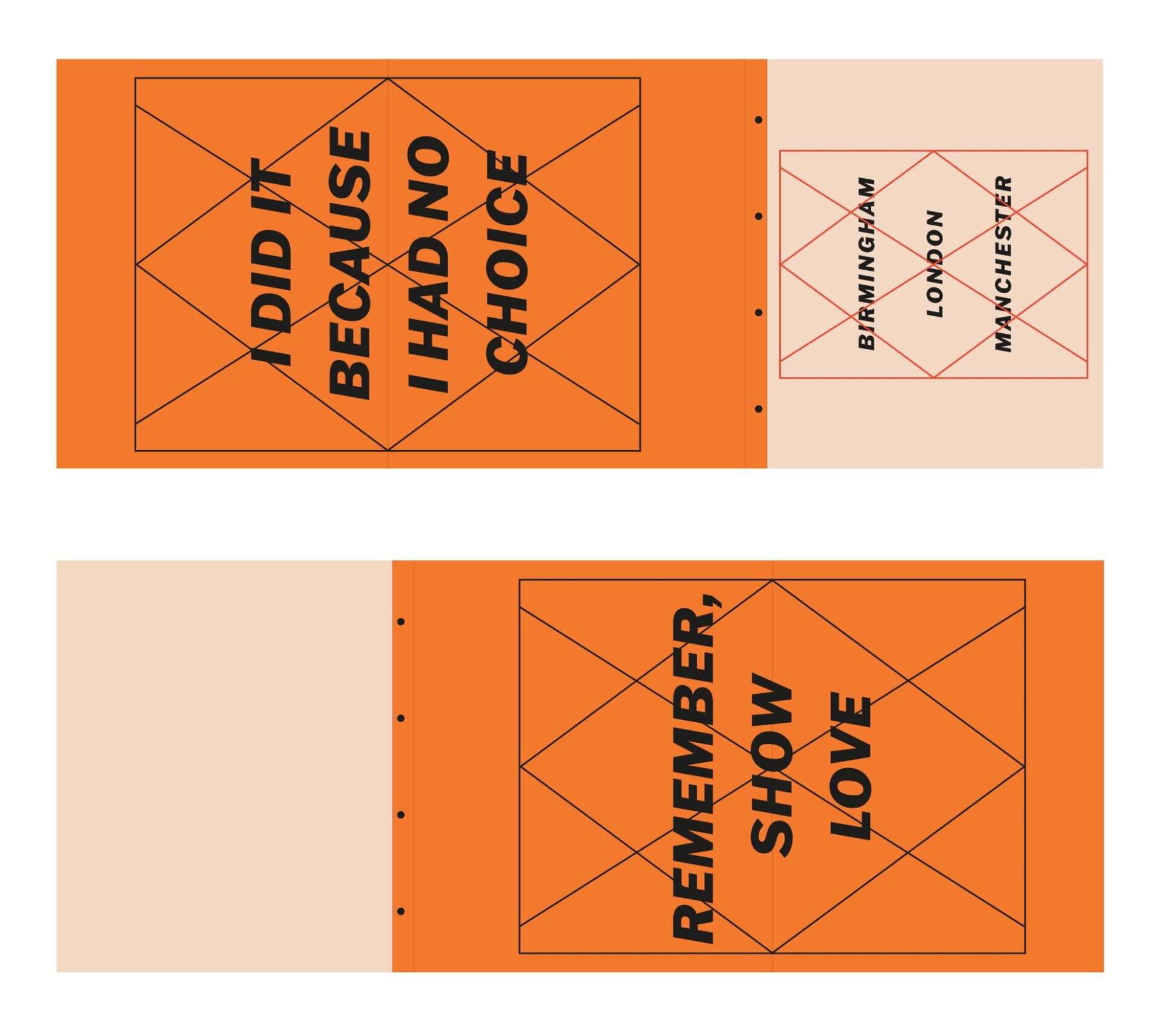

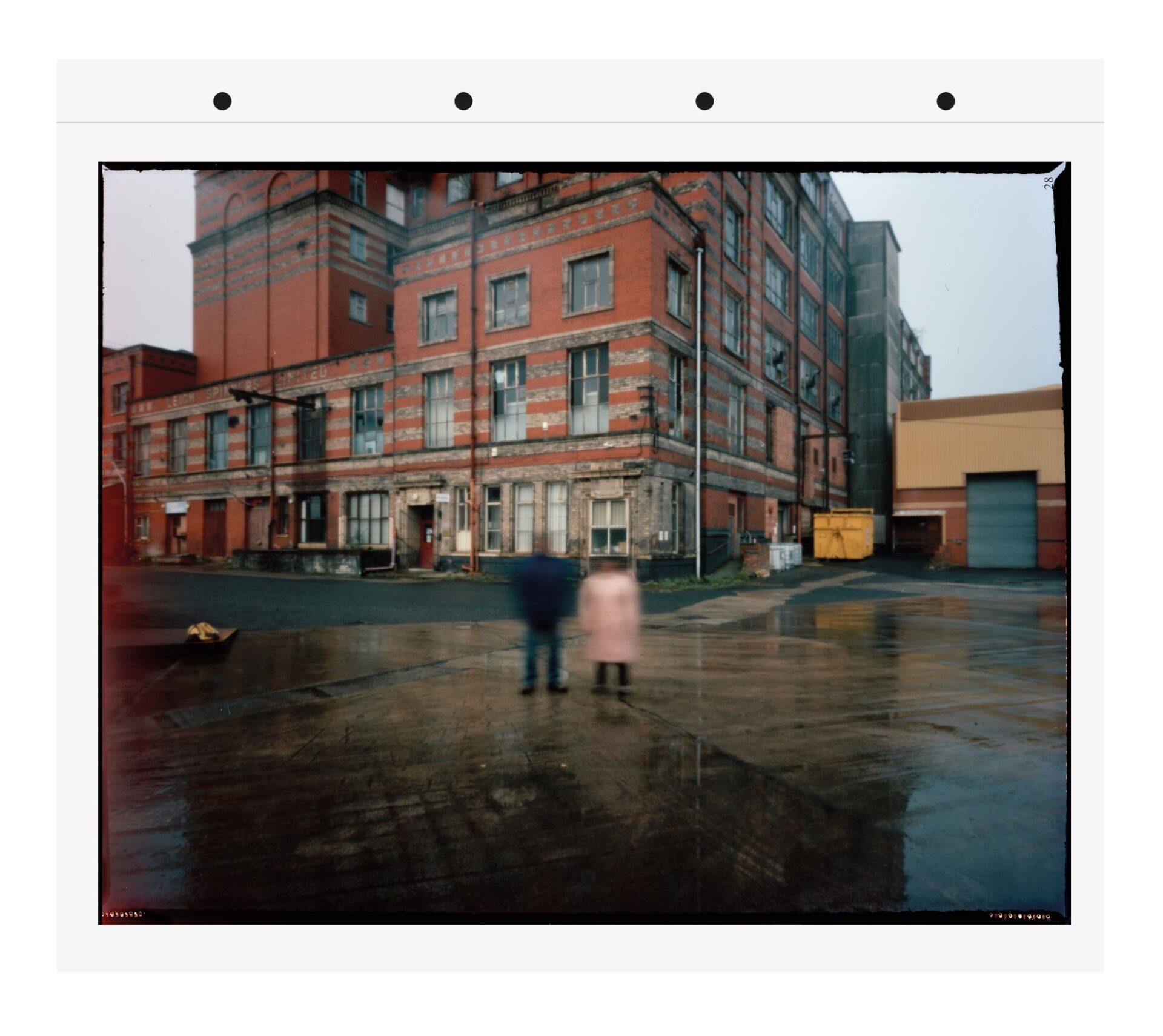
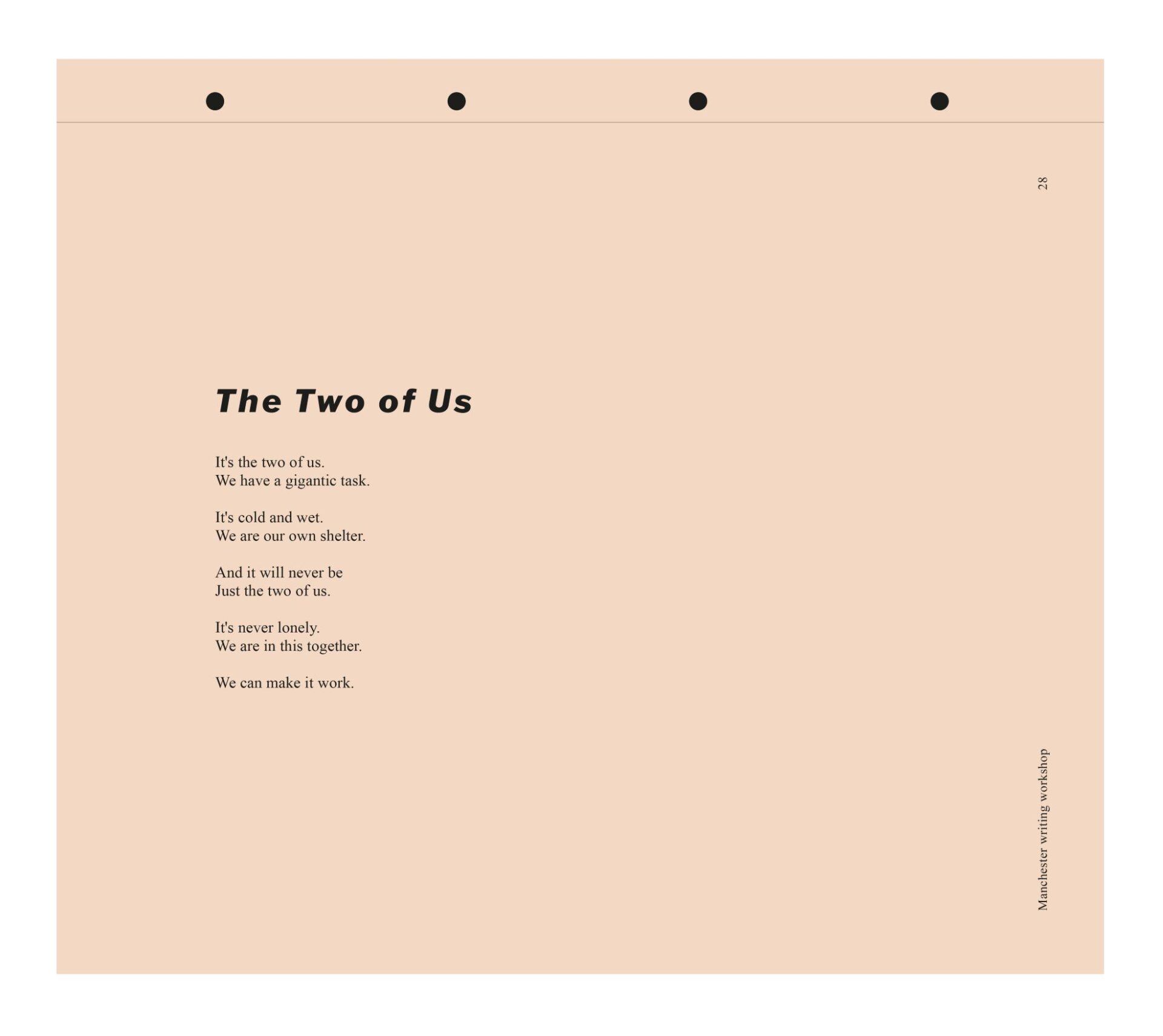
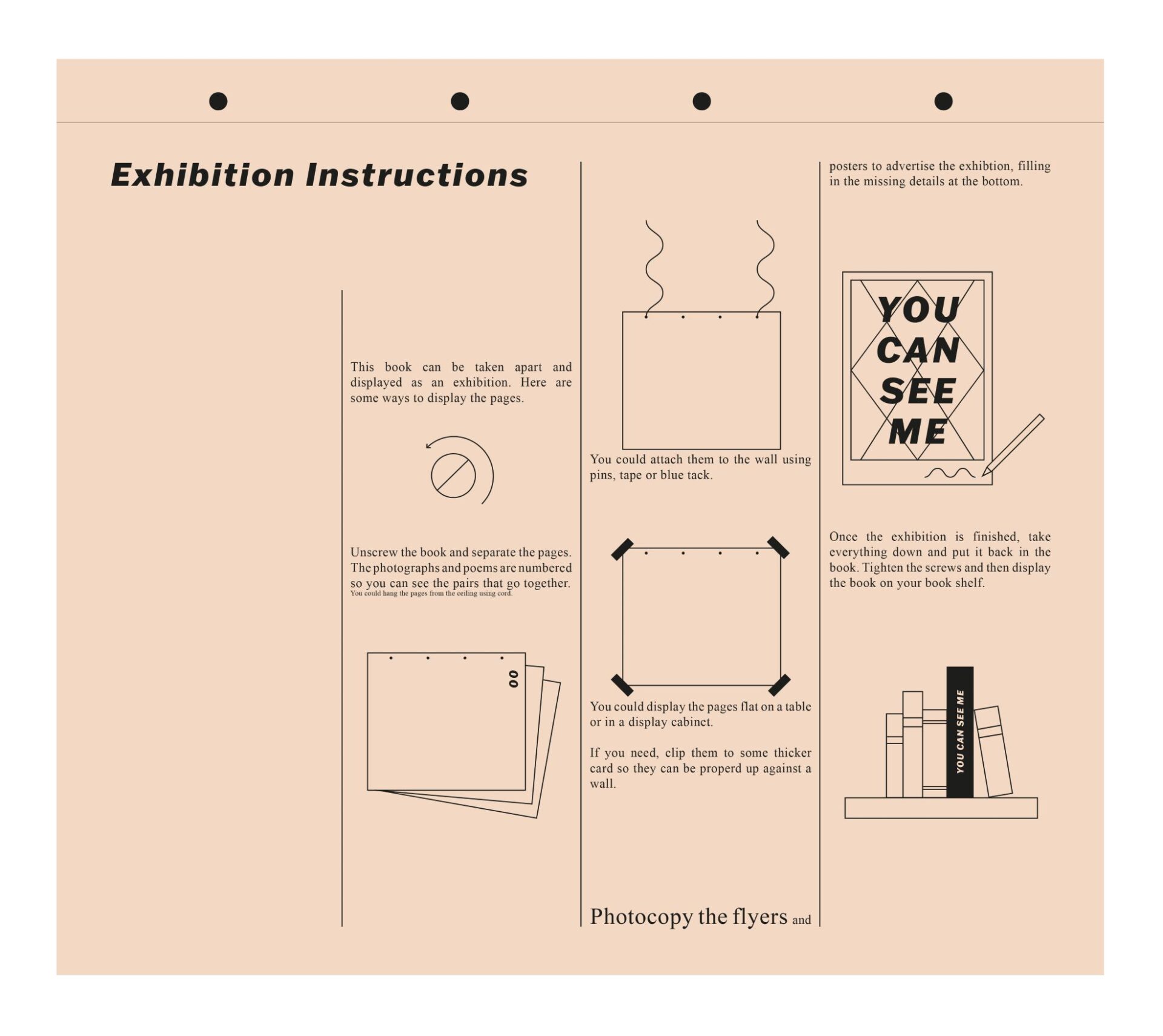
The binder contains:
- 33 photo pages printed on a FSC satin paper 250gsm, which optimized the colour and lustre of the images
- 35 poem pages printed on Coloraction Salmon 160gsm
- 1 foldout A2 poster
- Exhibition introductory text page
- Exhibition installation instructions page
- Writing workshop prompts page
Exhibition-in-a-book tour
Alan’s photographs and the poems by people seeking refuge were exhibited in 12 libraries in the UK simultaneously during Refugee Week 2023. The Gignouxphotos team installed the exhibition in libraries in the three cities in which the project had been developed: Birmingham, London, and Manchester, using different installation approaches.
Birmingham
We were given the opportunity to exhibit in the Shakespeare Memorial Room in the Library of Birmingham for over two months during the busy summer period. This is a nineteenth century room with glass fronted wooden cabinets that was relocated to a designated space at the top of the library building. The room provided an unusual, historical setting with cultural significance. The Shakespeare room is accessed via an enclosed platform with panoramic views of the city, which provided the backdrop for the opening event.
We worked closely with the team at Everything to Everybody to create an exhibition that established a link between the contemporary writing by people seeking refuge and Shakespeare’s texts addressing themes of exile. The library made facsimiles of early editions of the plays displaying them open at the relevant pages in cases at the centre of the room. The links between the bard’s work and the condition of exile were described in wall texts above the cases. We mounted Alan’s work and the refugees’ writing on black foamboard panels, which we installed on the fronts of the cabinets lining the room.
Workshop leader: Malka al-Haddad
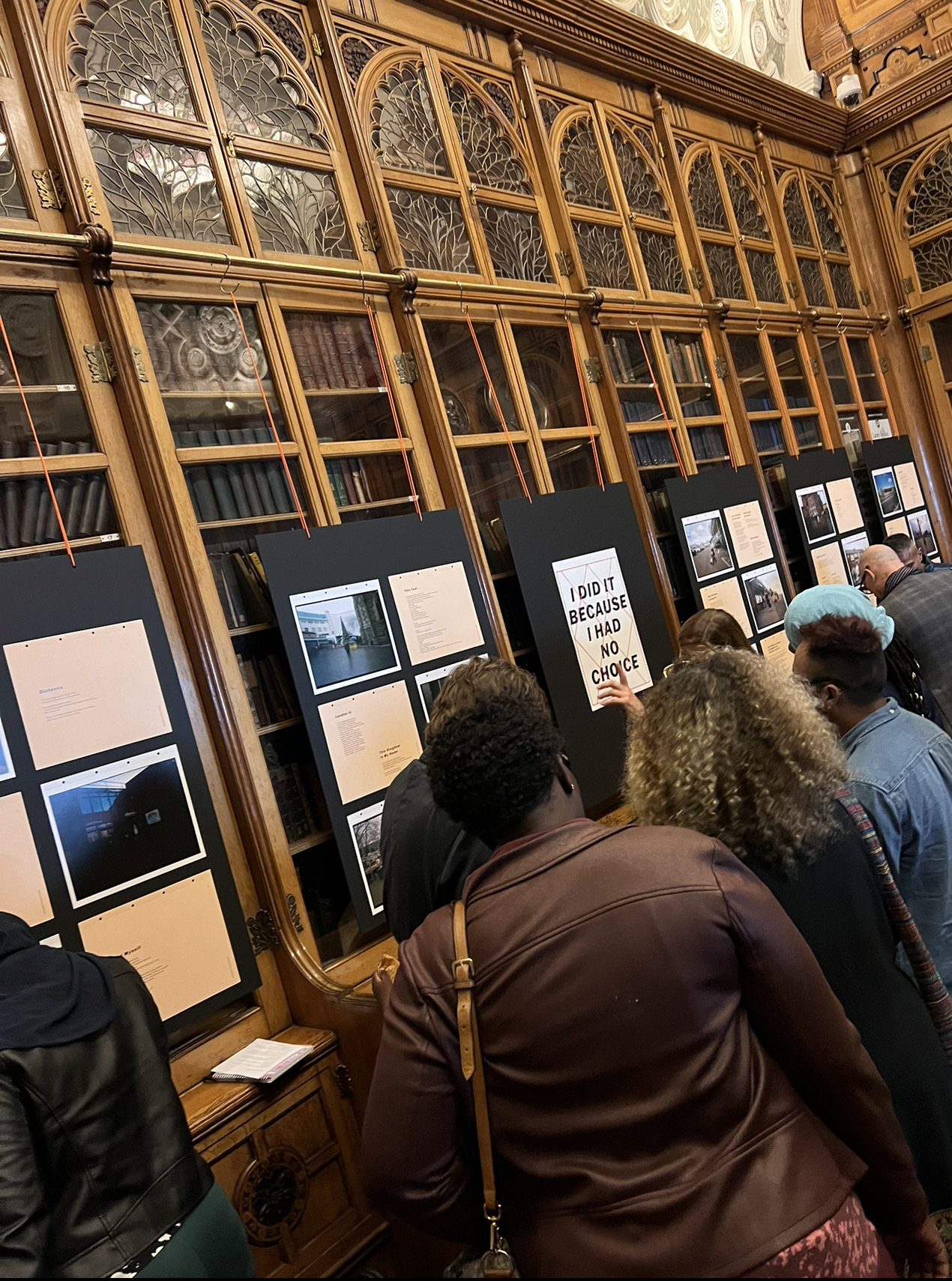
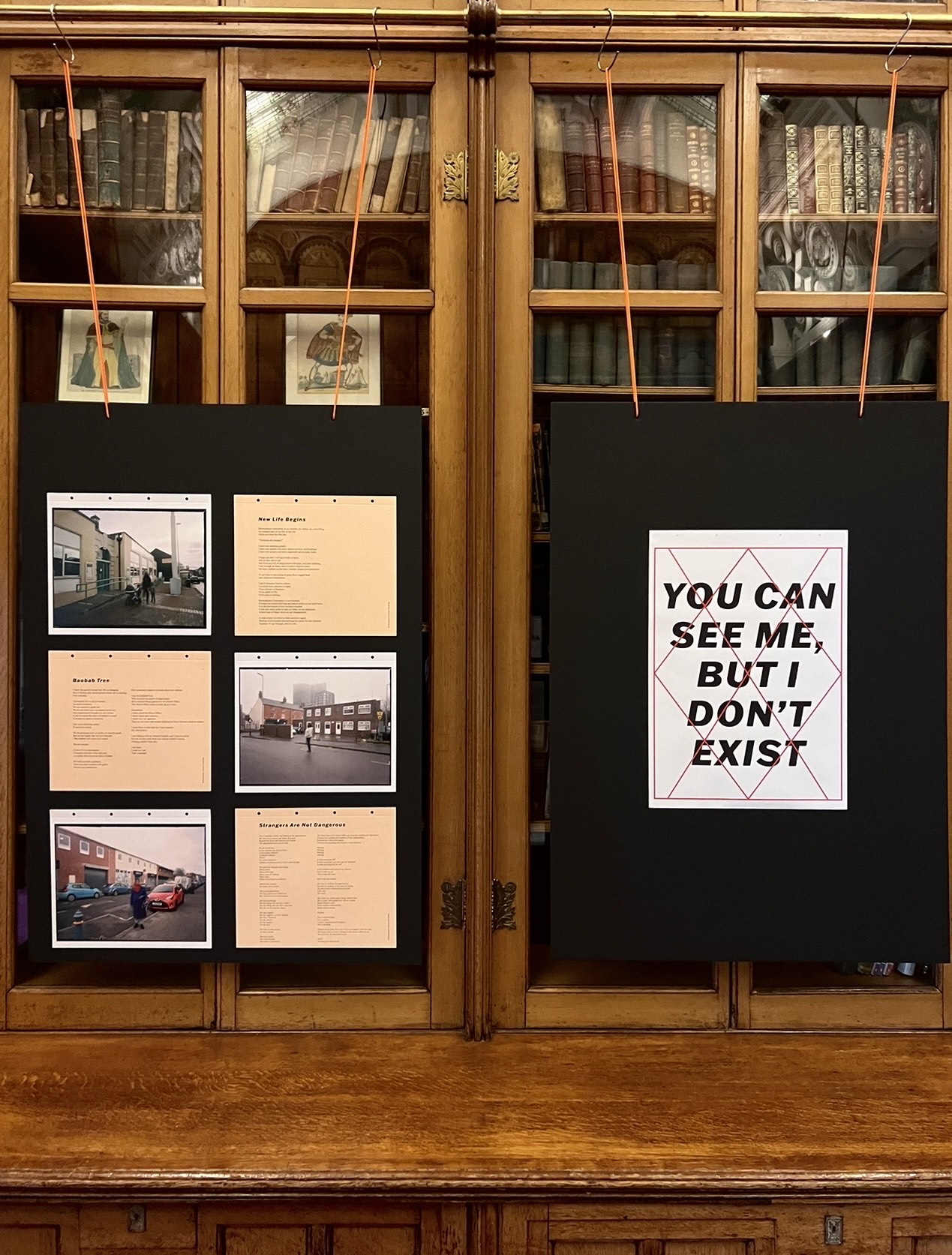

London
In London, the exhibition was held at Stratford Library in Newham, one of London’s most diverse boroughs, home to many of the city’s people seeking refuge and immigrants. We installed the exhibition on the ground floor of the library, an area through which all visitors to the library pass and which is heavily used both as a study area and space for activities. We mounted the work on black foamboard and installed the panels on the walls using the existing hanging system.
Workshop leader: Laila Sumpton
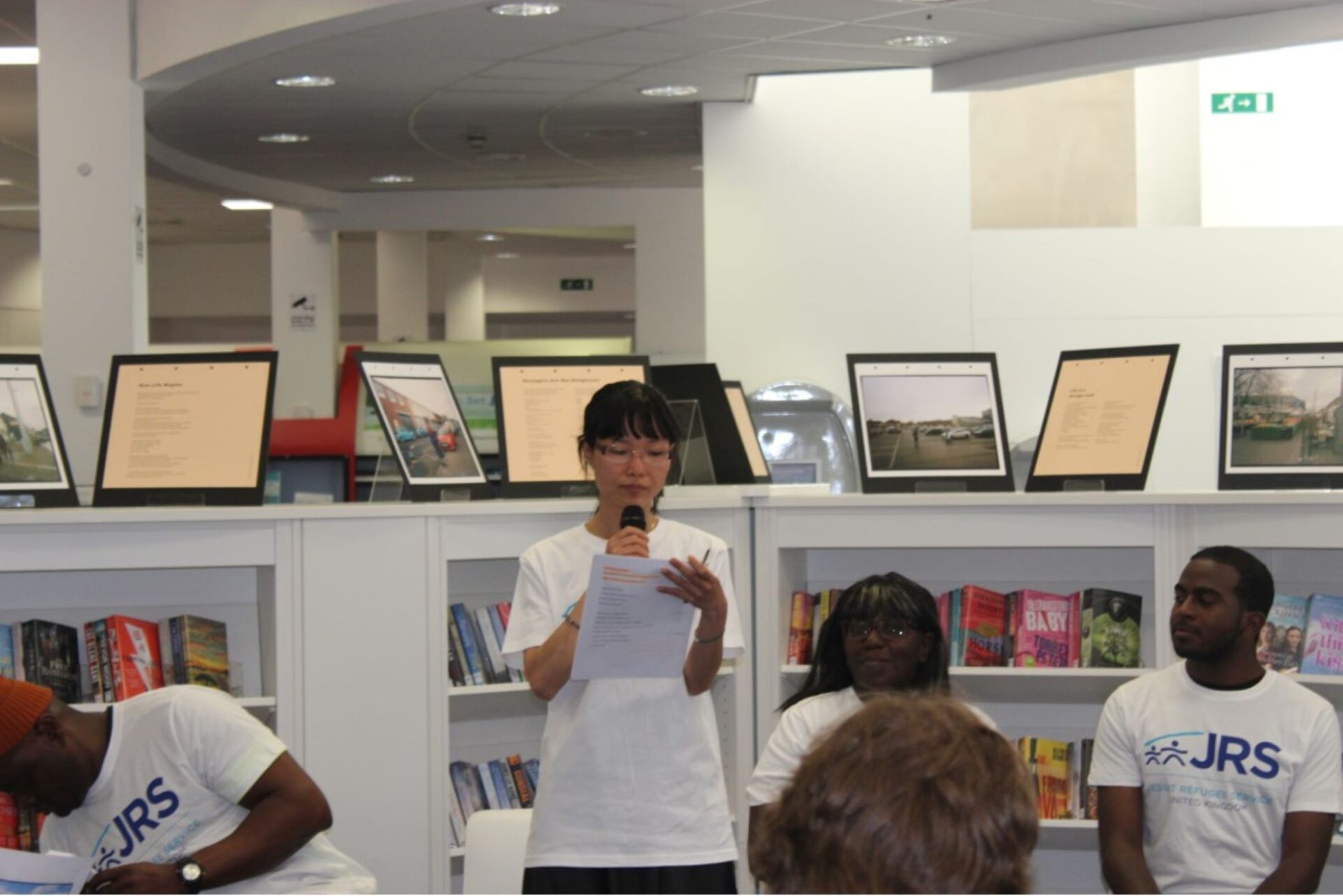
Manchester
The exhibition in Manchester was installed in the circular, domed Wolfson Reading Room in the iconic Manchester Central Library. The room retains many of the original architectural features designed by Vincent Harris. At the centre of the rotunda there is an ornate clock raised on four columns and surrounded by two semi-circular wooden counters. We installed the work on Perspex stands arranged along the counters in such a way that the exhibition could be approached from any direction.
Workshop leader: Ambrose Musiyiwa


UK libraries and other organisations
We posted the exhibition-in-a-book to nine other libraries and organisations in the UK. The participating libraries were Altricham Library (Trafford), Ashton Library (Tameside), Crompton Library (Bolton), Failsworth Library (Oldham), Gorton Library (Manchester), Salford Central Library (Salford), Standish Library (Wigan). Two organisations also participated: City of Sanctuary (Denbighshire, Wales) and Smile Angel A GBOS Project, Lewisham Refugee and Migrant Network).
A variety of displays
Poet Ambrose Musiyiwa, who was the workshop leader for Manchester and the editor of the exhibition-in-a-book, led workshops at several of the libraries. Below he describes his experience of working with them and the way in which they had displayed the exhibition:
“I was awe-struck by how open and accessible the libraries I visited are and also by the range of services they offer. And I was very impressed by how a good number of the libraries were actively working with and supporting both local communities and people who are seeking refuge.
Conversation with the librarians, members of the local community and some of the people who are seeking refuge I met at the libraries convince me there is value in either more workshops like this or other creative projects where local communities and those who are seeking refuge can meet and work together on arts projects or through which they can share creative writing, art and related materials and products or through which people can connect as people living together in the same or adjacent communities.
Different libraries used the exhibition-in-book differently. Two libraries kept the book on display intact either because of a shortage of exhibition space or because they were worried about taking the book apart and then not being able to put it back together again. Others had the book on display on boards, while one library dedicated a whole room to the book and had the pages pinned on the walls and on a set of about four or five doors that divided the exhibition space and an adjacent room. The doors opened at an angle and gave the whole space the feel of an exhibition like you see in some galleries.”
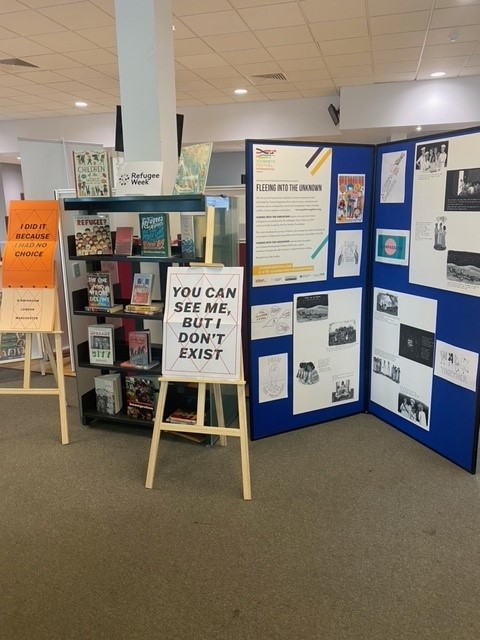

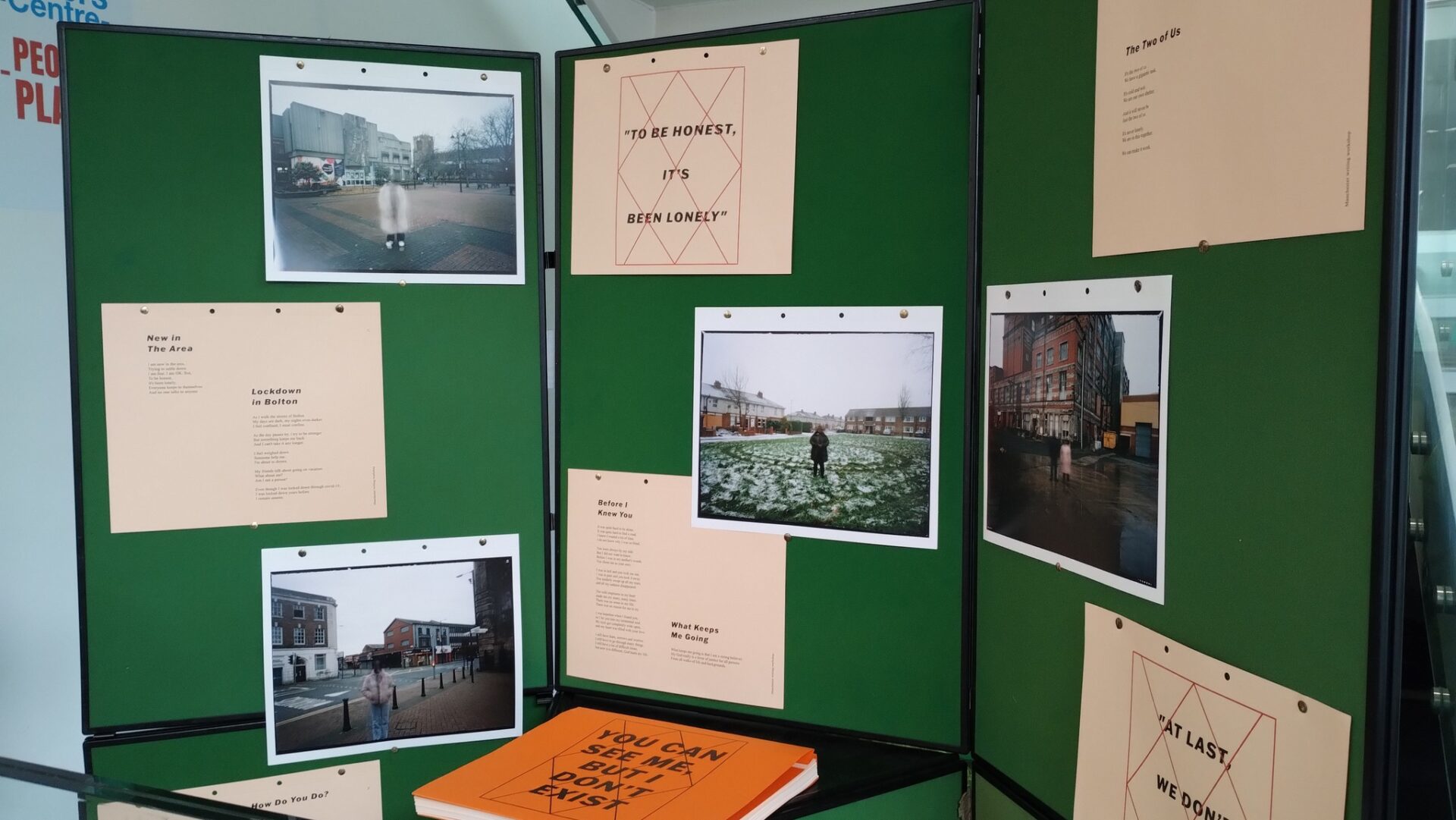
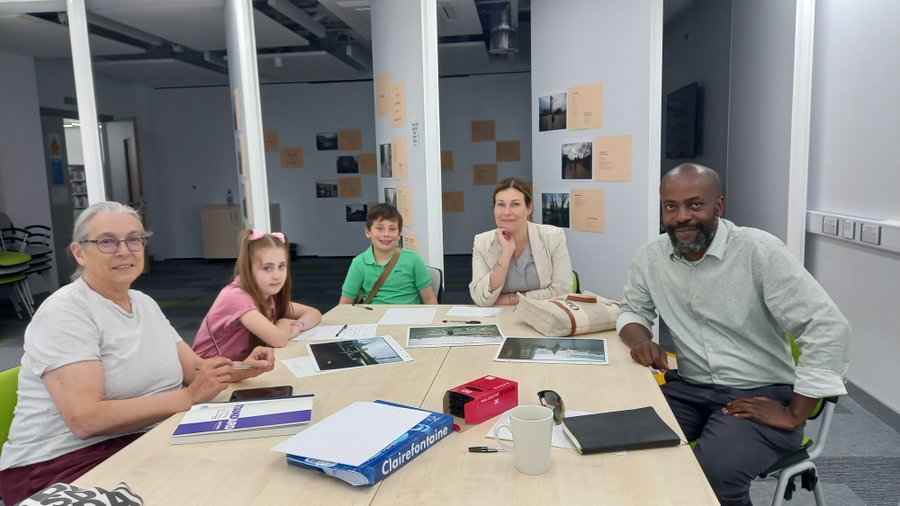
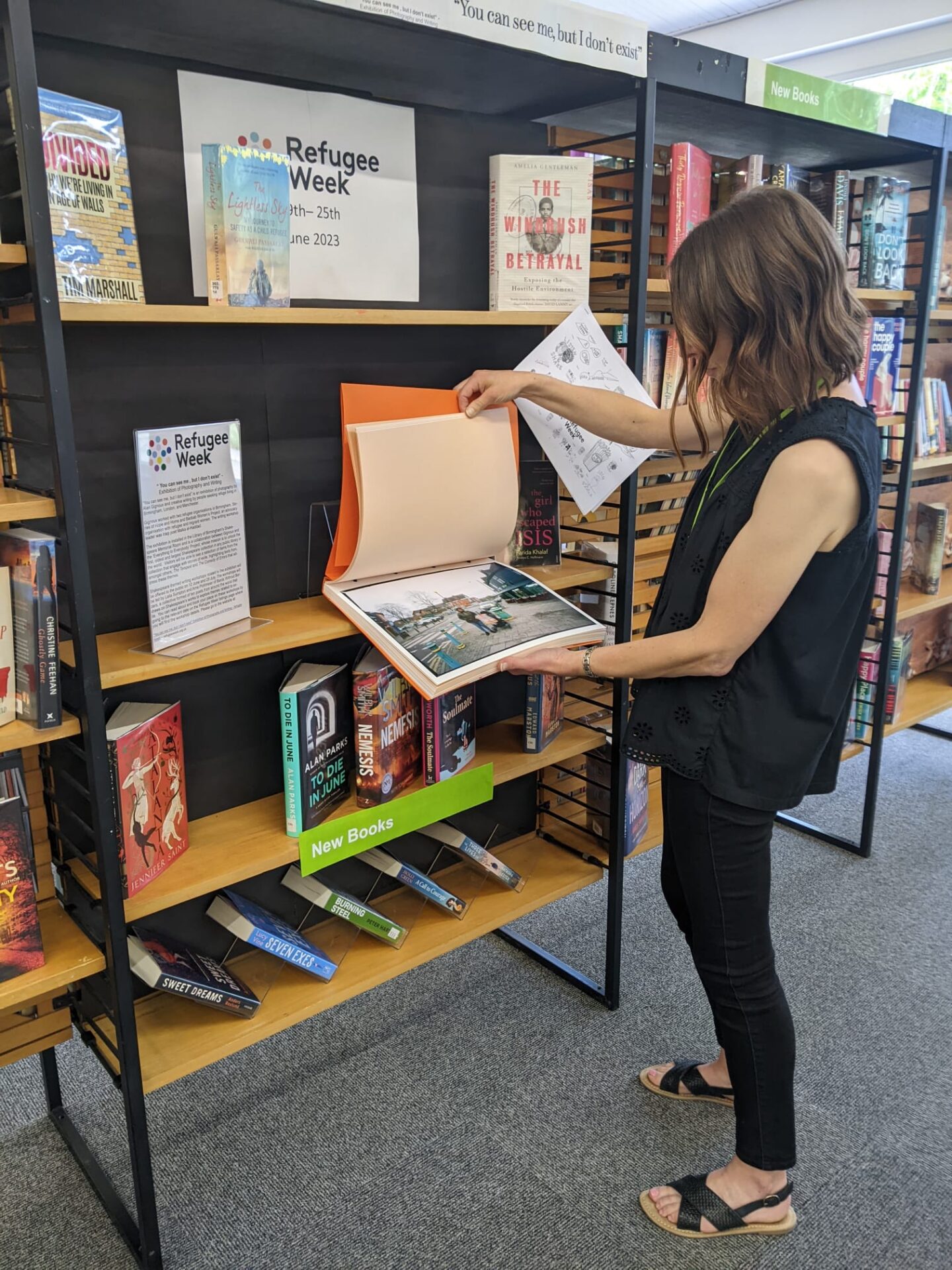
Evaluation of the exhibition-in-a-book
We feel that the exhibition-in-a-book worked well as an economical way of touring an exhibition, greatly extending the potential for people to see the exhibition and providing libraries with a free resource during Refugee Week. The exhibition also worked well as inspiration for Ambrose’s workshops. In his evaluation, Ambrose referred to the exhibition-in-a-book as “one of the most exciting initiatives I have come across so far.”
For the three exhibitions managed by Gignouxphotos, the exhibition-in-a-book proved flexible and robust enough for exhibition in a variety of spaces, although in some cases it would not have been possible to reassemble the book. The local libraries also highlighted this question – should they display the work and risk not being able to return it to book form or should they display the binder intact as a book to be leafed through?
In the end, the libraries needed to choose between the short-term value of exhibiting the work as an installed exhibition or the longer-term value of preserving the book. This is something that we would seek to resolve when creating similar portable exhibitions in the future.
The Gignouxphotos team worked with people seeking refuge living in Birmingham, London, and Manchester, workshop leaders, refugee organisations, and libraries. Please go to the “You can see me, but I don’t exist” project page for a list of credits.


Share this...